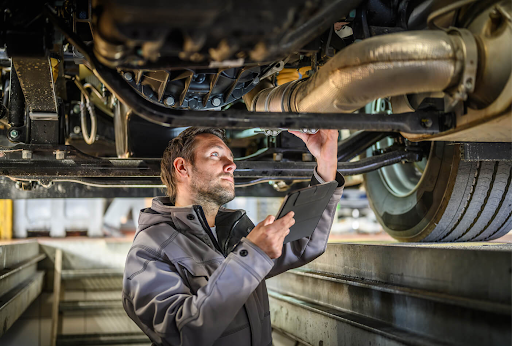Maintaining a commercial fleet is crucial to keeping your vehicles in top condition and ensuring they stay on the road longer. Whether you manage a few vehicles or an entire fleet, regular care and attention can save you money, reduce downtime, and help avoid costly repairs. This post will share five important maintenance tips to help you keep your fleet running smoothly.
1. Schedule Regular Commercial Fleet Servicing
One of the most important things you can do to keep your fleet in good working condition is to schedule regular commercial fleet servicing. Just like how you visit a doctor for checkups, your vehicles need professional servicing at regular intervals.
This servicing includes checking the engine, brakes, tires, and all other essential components to make sure everything is functioning well. Regular servicing can catch small problems before they turn into expensive repairs, allowing you to fix them early.
2. Keep Up with Tire Maintenance
Tires are one of the most important parts of any vehicle. For your fleet, checking the tire pressure and tread regularly is key to ensuring safety and efficiency. Over-inflated or under-inflated tires can cause uneven wear, increase fuel consumption, and even result in accidents.
Checking the tire pressure and making sure your tires are in good shape helps improve fuel efficiency and prevent unexpected breakdowns. Replace any damaged tires and keep track of tire rotations to ensure even wear and tear.
3. Look for an Experienced Auto Body Shop
Finding an experienced auto body shop is vital for keeping your fleet in the best shape possible. A skilled auto body shop can repair dents, scratches, and other exterior damage that your vehicles may sustain on the road.
These professionals have the tools and knowledge to fix your vehicles correctly the first time, preventing further damage. Choosing an auto body shop with a good reputation for quality work ensures that your fleet vehicles stay looking good and continue to perform well.
4. Perform Regular Fluid Checks
Checking the fluid levels in your vehicles is another important maintenance step. Fluids like oil, transmission fluid, and coolant keep the engine and other components working smoothly. Regularly checking and changing these fluids ensures that your vehicles run efficiently.
Low or dirty fluids can cause engine damage or even breakdowns, so it’s essential to top up and replace fluids on time. Make sure your drivers or maintenance team are familiar with how to check and maintain fluid levels to keep everything running without issues.
5. Train Drivers to Maintain the Fleet
Your drivers play an important role in the overall condition of your fleet. Proper training on how to operate the vehicles safely and efficiently can extend their lifespan. Teach your drivers to report issues like strange noises or vibrations immediately so they can be addressed quickly.
Encourage smooth driving habits, such as avoiding sudden braking or hard acceleration, which can reduce wear on the engine and brakes. When drivers are trained well, they help reduce maintenance costs and keep the vehicles in better shape for longer.
Conclusion
Maintaining a fleet requires attention to detail and a proactive approach. By scheduling regular commercial fleet servicing, ensuring tire health, working with a skilled auto body shop, checking fluids, and training your drivers, you can keep your fleet running smoothly and avoid costly breakdowns.
A little investment in regular maintenance can go a long way in ensuring your vehicles are safe, efficient, and dependable on the road.


